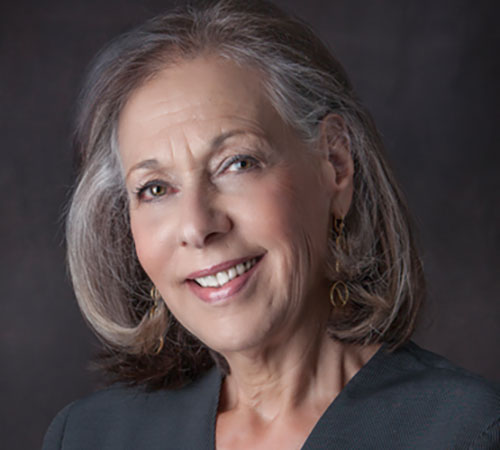Alma S. Merians, PhD, PT
Professor and Chairperson of the Department of Rehabilitation and Movement Sciences, Rutgers School of Health Professions
Alma S. Merians, PhD, PT received her degree in Physical Therapy from Columbia University and did graduate studies at New York University, receiving a PhD in Pathokinesiology. She is Professor and Chairperson of the Department of Rehabilitation and Movement Sciences. The department was one of the first in a State university to offer entry-level doctoral education for physical therapists.
She has considerable research and clinical expertise in upper extremity motor control post stroke. The main focus of her work is to study basic mechanisms underlying neuromuscular control of human movement and sensorimotor learning and to utilize technology-assisted rehabilitation to re-train people with neurological diseases like stroke or cerebral palsy. She was one of the pioneering groups to use interactive, adaptive robotics and virtual reality simulations for hand training in people with hemiplegia post-stroke and has been integral to the development of the system. Her teaching expertise as a Professor in the Department of Rehabilitation and Movement Sciences is in Motor Learning and Control and Neurorehabilitation. As a Physical Therapist she has extensive clinical expertise in the rehabilitation of adults and children with neurological disorders and brings this important combination of skills to the development and testing of this innovative system. Her knowledge regarding motor control and motor learning informs the customizable adaptations that automatically modify the level and challenge of the task and the visual, auditory, and haptic feedback presented to the subjects. Her early work examined the behavioral concomitants of traumatic brain injurity and the nature of movement deficits found in patients with brain damage from either a left-sided or right-sided cerebral vascular accident. Uncovering some of the precise movement deficits in patients with cortical brain lesions led her to think about innovative methods to facilitate the reacquisition of these functional movements. Traditional physical therapy treatment methods have provided tangible but limited improvements in regaining precise control of upper extremity function after a stroke. She is the author of over 38 manuscripts and book chapters, is invited to speak internationally, is often asked to be a member of the NIH study section, received the SHRP Research Award and has twice received a conference best paper award. She has received R01 grant funding and recently submitted a renewal grant for this on-going research program. In addition to her scientific expertise she has excellent administrative and management skills. During her eighteen year tenure as Chair of the Department of Rehabilitation and Movement Sciences, the department has grown from five faculty to twenty-five. An integral part of the department is a large clinical practice that provides occupational and physical therapy to over 1000 children with neurological disorders.

